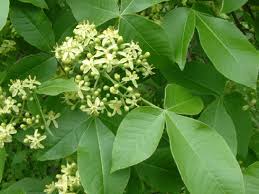On Saturday, 12-1-12 four volunteers and two staff (including Volunteer Coordinator Yvonne Dunphe) planted about 200 native shrubs and small trees at Germantown MetroPark. These shrubs were grown from seed by the Marianist Evironmental Education Center in Beavercreek. They were planted to create an edge habitat composed of native shrubs and trees. Each plant was protected from deer and rabbits by a plastic shelter.
 |
| Volunteers Mike Stanton, Mike Shade, Patrick Kennedy, and Marga Huban proudly pose after planting 200 native shrubs at Germantown MetroPark on December 1. Great job everyone!! |
Southwest Ohio has many species of sun-loving shrubs and small trees that lived in openings in the forests and along the edges of prairies and wetlands prior to human settlement. Many are very important to wildlife. Wild hazelnuts and plums have edible nuts and berries and make thickets for nesting birds. Hoptree is a major food plant for the giant swallowtail butterfly, and many others like blackhaw viburnum and American crabapple are important parts of "edge" habitats. Many species of birds like yellow breasted chat, blue-winged warbler, and willow flycatcher need edge habitats. Unfortunately most of these plant and bird species have become quite uncommon in southwest Ohio. The loss of fencerows and edges to clean farming over the years, the massive colonization of open areas by invasive shubs (bush honeysuckle, autumn olive, common buckthorn etc), and invasion of openings by trees are the likely reasons for their decline.
 |
| Wild Plum (Prunus americana) |
 |
| American Crab (Malus coronaria) |
 |
| Hoptree or Wafer Ash (Ptelia trifoliata) |
 |
| American Hazelnut (Corylus americana) |
Managing for edges is difficult, mainly because they are actually land in transition. Without some kind of disturbance they are inevitable invaded by canopy trees and become young forests (often poor quality ones).
Edges and thickets are often too thick to mow with conventional equipment such as a bushog, and too labor intensive to do it by hand. As a result, they are often lost to succession.
A few years ago Five Rivers MetroParks solved this problem with the purchase of a Fecon. This tough, tracked tree/shrub whacker can turn the biggest honeysuckle or buckthorn into mulch. After some follow-up spraying the old thickets of invasive shrubs are ready to be restored with native shrub species.
Habitat management plans in Five Rivers MetroParks natural areas are designed to maintain a variety of habitats and plant and animal species. At the core of most natural areas is some mature forest. Plans call for the forest to be protected and managed to achieve mature status, and to get larger on adjacent land. Managed/restored thickets (controlled succession) zones border the forests, and open grasslands border the controlled succession, usually on the park boundary.


This shrub is a very popular with our customers in the nursery TN. We wholesale quantities available for immediate delivery anywhere in the States. This shrub can be a evergreen or deciduous shrub. Standing 8-12 feet high, is even wider than high, giving a more horizontal than most shrubs. It is susceptible to pruning so it can be pruned to form a small tree or pruned to serve as an ornamental shrub. Either way the Mariessii Viburnum is a fine plant.
ReplyDeleteDouble Fire Viburnum